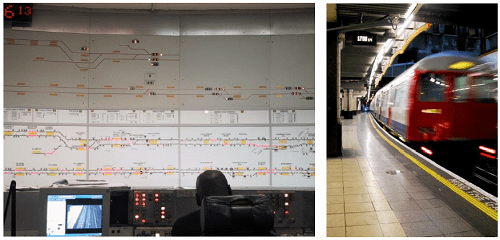Raima, a premium provider of high performance database technology, today announced that its Database Manager has been successfully deployed by London Underground.

London Underground has deployed the Raima Database Manager as a key component to help deliver capacity and reliability improvements on the Piccadilly Underground line. The Raima product holds and manages the mass of track occupancy, signal status and other vital data allowing real time display, interrogation and control in order to optimise visibility of the whole line network in real-time.
The Piccadilly line is one of the last routes to be upgraded by Transport for London (TfL) which is seeking to increase passenger capacity of the line by 24% for next year, as well as the development of a new control centre in Hammersmith. This means that trains will have to run more often and more reliably, which in turn puts more pressure on the track, rail signalling and control infrastructure. All of this takes place in a challenging operating environment with limited maintenance access and stringent public safety requirements.
With much of the control equipment on the line now approaching 30 years of age, improvements were readily realised by replacing electro-mechanical and electro-optical sensors with solid state devices. New communications links have also been installed that allow remote monitoring and control of timetable information, one example of which is the deployment of geotagged base stations.
The Raima Database Manager (RDM) is the software interface that organises and collates the continuous data stream that is being sent by points and signal position sensors into an optimised relational, hierarchical database; it simultaneously retrieves the data and communicates the relevant information to both machine and human controllers.
The RDM was used as the central storage database for all railway data, track circuit occupancy, signal status and other static data. This data was then used to provide information displays to the Line Operations & maintenance teams to monitor train locations, train numbers, destinations, and routes. The Operations and maintenance teams were then able to issue various commands to affect train destinations, time table operations, and train numbers. This enhancement was also required to meet strict rail Safety Integrity Level Certification.
The choice of database model (which can be readily configured by the client using low level C or C++ application languages) allows highly efficient use of device memory and thus far quicker query speeds allowing near real-time communication of network status. The RDM has sophisticated MVCC functionality which means that whilst the underground operators are reading the data it is not locked and the underlying databases continue to be updated meaning that operators always have the latest information available.
With planned upgrade work on the line stretching out to beyond 2020 it is vital that the control systems can cope with change and an increase in the amounts of data they need to handle. In their 2011 business plan TfL hope to introduce a new fleet of passenger rolling stock with improved motor performance and passenger ‘walk-through’ capability by 2020. Train control systems have to be able to cope with this future increase in customer capacity.
The deployed version of RDM is already configured for multi core operation to make the best use of current and future microprocessor performance. Should there be a requirement for different software platforms to use the line data RDM allows this by supporting the usual ODBC, JDBC and ADO.Net Drivers as well as the industry standard SQL API.
Avoiding train stoppages is a high priority and is governed in-part by IEC61508 (Functional Safety of Electrical/Electronic/Programmable Electronic Safety-related Systems). The underpinning concept of the standard is that electronic control systems have high levels of functional reliability and redundancy, which is why the RDM system allows for mirroring and replication of databases to other devices to ensure that in the event of a problem, train operating information is always available. The other key plank of functional reliability is the stability and durability of the actual equipment or software and again, the Raima product delivered.
Nigel Rozier, EMEA Sales Manager at Raima said, “London Underground is a real showcase application for Raima, we supply embedded databases and data management systems for everything from assembly line robots, to mobile phones, to flight services equipment on commercial aeroplanes, but it is not often that we have the opportunity to talk about what we do in detail.
“This application demonstrates a wide range of the key aspects to our software; providing a robust but flexible database solution that can be hosted on distributed components and vehicles and provides robust data storage and availability, combined with a flexible management product which can be used to simplify complex data processing tasks and provide reliable functional transparency. It is also further proof that the RDM supports the required level of high availability to be part of an IEC 61508 Safety Integrity Level Certified Application.”
The deployment of the Raima Database Manager has allowed London Underground operatives to trust that the data aspect of the trains running on-time and being controlled according to safety standards is now taken care of, allowing them to concentrate their efforts on other elements of the planned upgrade works which will ultimately result in an even more robust train control system and passenger capacity and comfort improvements.
About London Underground
London Underground (LU) carries more than one billion passengers a year, as many as the entire National Rail network.
With around three and a half million journeys made each day, on 11 lines serving 270 stations, we are now running more services than ever before on the 150-year-old network.
About Raima
Raima Database Manager (RDM) products include options to meet a variety of data management architectural designs by providing a choice of data models and access methods to solve the most stringent performance requirements.
For more information on RDM or to download the SDK for evaluation visit: Product Overview



























